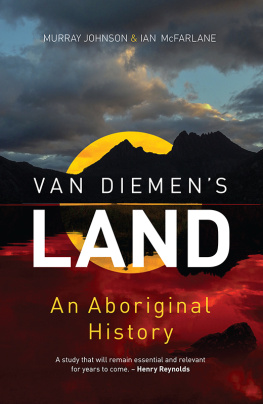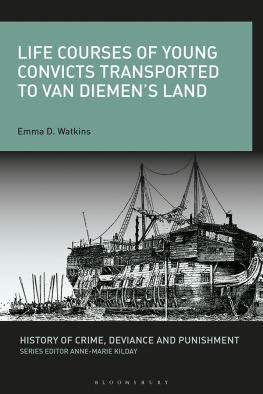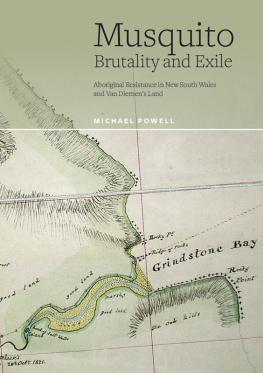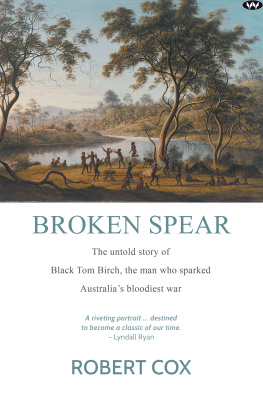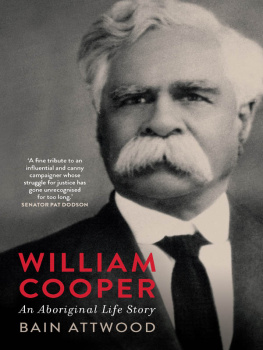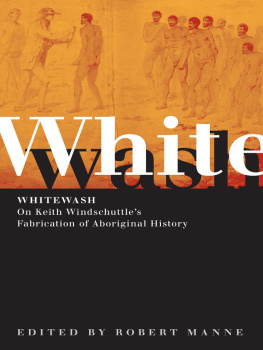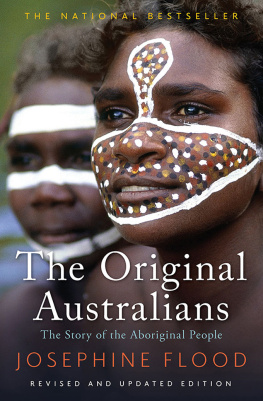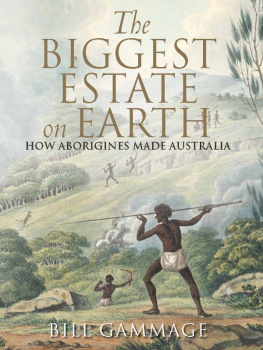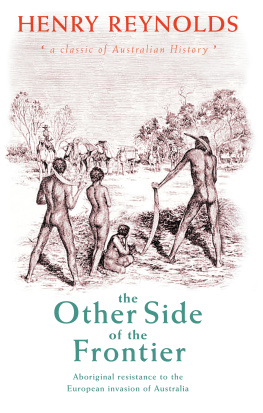VAN DIEMENS
LAND
MURRAY JOHNSON has taught Australian History and Indigenous Studies at the University of Queensland, the Australian National University and the University of Tasmania. He has published widely in both fields, with his most recent book being Australias Ancient Aboriginal Past: A global perspective (2014). Murray has also been heavily involved in the historical underpinnings of Native Title claims in Queensland.
IAN MCFARLANE has taught Aboriginal Studies at the University of Tasmania. He specialises in studies of Aboriginal people from Tasmanias north-west region, and has been a contributor to the History Wars debates. He has published widely, with his bestknown work Beyond Awakening: The Aboriginal tribes of North West Tasmania, a history released in 2008.
VAN DIEMENS
LAND
An Aboriginal
History
MURRAY JOHNSON AND IAN McFARLANE

A UNSW Press book
Published by
NewSouth Publishing
University of New South Wales Press Ltd
University of New South Wales
Sydney NSW 2052
AUSTRALIA
newsouthpublishing.com
Murray Johnson and Ian McFarlane 2015
First published 2015
This book is copyright. Apart from any fair dealing for the purpose of private study, research, criticism or review, as permitted under the Copyright Act, no part of this book may be reproduced by any process without written permission. Inquiries should be addressed to the publisher.
National Library of Australia Cataloguing-in-Publication
Author: Johnson, Murray (Murray David), 1956 author.
Title: Van Diemens Land: an Aboriginal history/Murray Johnson, Ian McFarlane.
ISBN: 9781742234212 (paperback)
9781742241890 (ePub/Kindle)
9781742247151 (ePDF)
Subjects: Aboriginal Australians Tasmania History.
Aboriginal Tasmanians History.
Ethnology Australia.
Tasmania History.
Other Authors/Contributors: McFarlane, Ian 1945 author.
Dewey Number: 994.6
Design Di Quick
Cover design Xou Creative
All reasonable efforts were taken to obtain permission to use copyright
material reproduced in this book, but in some cases copyright could not be
traced. The author welcomes information in this regard.
This project has been assisted by the Australian Academy of the
Humanities.

TABLE OF MEASURES
VOLUME
One imperial gallon = eight pints = 4.55 litres
CURRENCY
One penny (1d.) = one cent (1c.).
Comparison: 1d. in the 1920s = 42 cents in 2000
One shilling (1s.) = twelve cents (12c.).
Comparison: 1s. in the 1920s = $5 in 2000
One pound (1) = two dollars ($2).
Comparison: 1 in the 1920s = $100 in 2000
AREA
One acre = 0.404 hectares
One square mile = 2.58 square kilometres
WEIGHT
One ounce (1oz.) = 28.3 grams
One pound (1lb.) = 16 ounces = 0.45 kilograms
112 pounds (112 lbs.) = one hundredweight (1cwt.) = 50.8 kilograms
ABBREVIATIONS
| AA | Australian Archaeology |
| ADB | Australian Dictionary of Biography |
| CT | Colonial Times |
| CSO | Colonial Secretarys Office |
| HRA | Historical Records of Australia |
| HRNSW | Historical Records of New South Wales |
| HTG | Hobart Town Gazette and Van Diemens Land Advertiser |
| KM | Koori Mail |
| TAC | Tasmanian Aboriginal Centre |
| TAHO | Tasmanian Archive and Heritage Office |
| THRA | Tasmanian Historical Research Association Papers and Proceedings |
CONTENTS
FOREWORD
by Henry Reynolds
Tasmanian settlers were keen to change the Islands name from Van Diemens Land to Tasmania in the 1850s when the British government brought convict transportation to an end and the colony was accorded the right to establish its own parliament with wide powers of internal self-government. But a name change could not expunge the legacy of the turbulent and tragic events of the first half of the nineteenth century any more than Tasmanians born after 1850 could ignore the enduring presence of the imposing architecture of the convict era which was an everyday presence in town and country alike.
The past lived on in other ways as well. Tasmanians have continually reflected on and written about their history. At the same time, long periods of economic and demographic stagnation prevented them from embracing that common colonial habit of looking eagerly to a beckoning future. Tasmanians have consequently been avid collectors of memorabilia, raconteurs, antiquarians and family historians. Serious history has been produced in every generation since the 1830s. As a result nineteenth century Tasmania left behind a richer historiographical legacy than any other part of Australia. At the forefront of this body of work stands the great two-volume History of Tasmania by Congregational minister John West published in Launceston in 1852.Two themes attracted Wests attention: the convict system and the tragic fate of the Tasmanian Aborigines. These subjects still elicit more interest from contemporary historians than any competing ones.
It is easy to see why the Aborigines have been an abiding subject of curiosity from the late eighteenth century when French and British expeditions found welcome shelter from the roaring forties in the bays and estuaries of south-eastern Tasmania. Every generation since has found aspects of the story worthy of investigation or conducive of compassionate concern. There were so many reasons for Europeans to speculate about the Tasmanians. They had lived in isolation for as many as 300 generations after the flooding of Bass Strait. The earliest occupation of what had been the Tasmanian Peninsula went back 30 000 years into the heart of the Ice Age. For the seafarers who visited Tasmania before the first British settlements were established in 1803 and 1804, the Aboriginal bands they encountered represented natural man untouched by civilisation and were variously viewed as noble or primitive savages. Later in the nineteenth century the Tasmanians were seen as the most primitive people on earth and of great sociological and scientific interest because their way of life represented the earliest infancy of the human race. Ascendant evolutionary theory fixed on the death of Truganini in 1876 as an event of global importance. Here was what appeared to be inconvertible, well documented proof of the rapid destruction of a unique race of people. It was compelling evidence of the operation of the laws of evolution which also presaged a like fate for native peoples all over the world. Generations of Tasmanians consequently grew up with the belief that there were no Aborigines on the Island. The truth of the matter was a further cause of interest in Island history. The emergence of an assertive, self-conscious Aboriginal community in the middle years of the twentieth century was a confounding experience for the wider community. But the implications of Aboriginal renaissance were once again of great historical significance. The survival of a distinct Aboriginal identity against almost impossible odds is a story of universal interest.
Given the richness of interpretation and the great wealth of documentation available in Tasmania, it was not surprising that the history wars of the first decade of the new millennium focused on the local story and in particular on the frontier conflict of the 1820s and the early 1830s. And one direct consequence of the intense debates of that period has been that a new generation of scholarship has appeared, often emerging from research at the University of Tasmania. With
Next page
